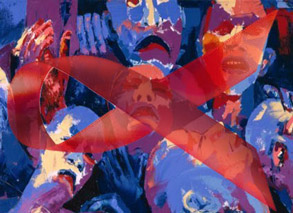 Apr. 4, 2025
Apr. 4, 2025
Weather
The Tajik ethnic minority
2009-08-07 11:40 BJT
Population: 33,200
Major area of distribution: Xinjiang
Language: Tajik
Religion: Islam
Standing at China's west gate in the eastern part of the Pamirs on the "roof of the world" is the Taxkorgan Tajik Autonomous County in Xinjiang, a town built up since 1950s. It is the place where the ancient Tajik ethnic group has lived generation after generation. Most of the 26,500 Tajiks live in compact communities in Taxkorgan, and the rest are scattered over areas in southern Xinjiang, including Shache, Zepu, Yecheng and Pishan. The Tajiks in Taxkorgan live alongside Uygurs, Kirgizs, Xibes and Hans.
Taxkorgan is perched at the highest part of the Pamirs. The world's second highest peak, Mount Qogir, towers in the south, and in the north stands Mount Muztagata, "the father of ice peaks." In addition, several dozen perennially snow-capped mountains, 5,000 to 6,000 meters above sea level, dot the 25,000-square-kilometer county. For centuries, the Tajiks have been engaged in animal husbandry and farming by making use of the luxuriant pasturage and abundant water resources. Every spring, they sow highland barley, pea, wheat and other cold-resistant crops. They drive their herds to highland grazing grounds in early summer, return to harvest the crops in autumn and then spend winter at home, leading a semi-nomadic life.
Custom
Over the centuries, the Tajiks have adapted their dressing, eating and living habits to the highland conditions. Men wear collarless long jackets with belts, on top of which they add sheepskin overcoats in cold weather. They wear tall lambskin hats lined with black velvet and decorated with lines of embroidery. The flaps can be turned down to protect ears and cheeks from wind and snow. Women wear dresses. Married women wear back aprons, and their embroidered cotton-padded hats also have back flaps. Women usually tie a white square towel on top of their hats when they go out, but brides like red ones. Both men and women wear felt stockings, long soft sheepskin boots with yak skin soles, which, light and durable, are suitable for walking mountain paths. The Tajik herdsmen enjoy butter, sour milk, and other dairy products, and regard meat as a delicacy. It is a taboo to eat pork and the flesh of animals which died of natural causes.
Most Tajik houses are square and flat-roofed structures of wood and stone with solid and thick walls of rock and sod. Ceilings, with skylights in the center for light and ventilation, are built with twigs on which clay mixed with straw is plastered. Doors, usually at corners, face east. Since the high plateau is often assailed by snowstorms, the rooms are spacious but low. Adobe beds that can be heated are built along the walls and covered with felt. Senior family members, guests and juniors sleep on different sides of the same room. When herdsmen graze their herds in the mountains, they usually live in felt tents or mud huts.
In most cases, three generations of a Tajik family live under the same roof. The male parent is the master of the family. Women have no right to inherit property and are under the strict control of their father-in-law and husband. In the past, the Tajiks seldom had intermarriages with other ethnic groups. Such marriages, if any, were confined to those with Uygurs and Kirgizs. Marriages were completely decided by the parents. Except for siblings, people could marry anyone regardless of seniority and kinship. Therefore marriages between cousins were very common. After the young couple was engaged, the boy's family had to present betrothal gifts such as gold, silver, animals and clothes to the girl's family. All relatives and friends were invited to the wedding ceremony. Accompanied by his friends, the groom went to the bride's home, where a religious priest presided over the nuptial ceremony. He first sprayed some flour on the groom and bride, and then asked them to exchange rings tied with strips of red and white cloth, eat some meat and pancake from the same bowl and drink water from the same cup, an indication that they would from that time on live together all their lives. The following day, escorted by a band, the newlyweds rode on horseback to the groom's home, where further celebrations were held. The festivities would last three days until the bride removed her veil.
Childbirth is a major event for the Tajiks. When a boy is born, three shots will be fired or three loud cheers shouted to wish him good health and a promising future; a broom will be placed under the pillow of a newborn girl in the hope that she will become a good housewife. Relatives and friends will come to offer congratulations and spray flour on the baby to express their auspicious wishes.
The Tajik people pay great attention to etiquette. Juniors must greet seniors and, when relatives and friends meet, they will shake hands and the men will pat each other's beard. Even when strangers meet on the road, they will greet each by putting the thumbs together and saying "May I help you?" For saluting, men will bow with the right hand on the chest and women will bow with both hands on the bosom. Guests visiting a Tajik family must not stamp on salt or food, nor drive through the host's flocks on horseback, or get near to his sheep pens, or kick his sheep, all of which are considered to be very impolite. When dining at the host's, the guests must not drop left-overs on the ground and must remain in their seats until the table is cleaned. It would be a breach of etiquette to take off the hat while talking to others, unless an extremely grave problem is being discussed.
The Tajik spring festival, which falls in March, marks the beginning of a new year, which is the most important occasion for the Tajik people. Every family will clean up their home and paint beautiful patterns on the walls as a symbol of good luck for both people and heads. Early on the morning of the festival, members of the family will lead a yak into the main room of the house, make it walk in a circle, spray some flour on it, give it some pancake and then lead it out. After that, the head of the village will go around to bring greetings to each household and wish them a bumper harvest. Then families will exchange visits and festival greetings. Women in their holiday best, standing at the door, will spray flour on the left shoulder of guests to wish them happiness. The beginning of the Fasting Month marks the end of a year. On this day, every family will make torches coated with butter. At dusk, the family members will get together, have a roll call and each will light a torch. The whole family will sit around the torches and enjoy their festive dinner after saying their prayers. At night, every household will light a big torch tied to a long pole and planted on the roof. Men and women, young and old, will dance and sing through the night under the bright light of the torches. The Islamic Corban festival is another important occasion for the Tajik people.
As a result of frequent exchanges with other nationalities, many Tajiks also speak the Uygur and Kirgiz languages and generally use the Uygur script for writing.
 Mail
Mail Share
Share Print
Print


 Video
Video









 2009 China Central Television. All Rights Reserved
2009 China Central Television. All Rights Reserved